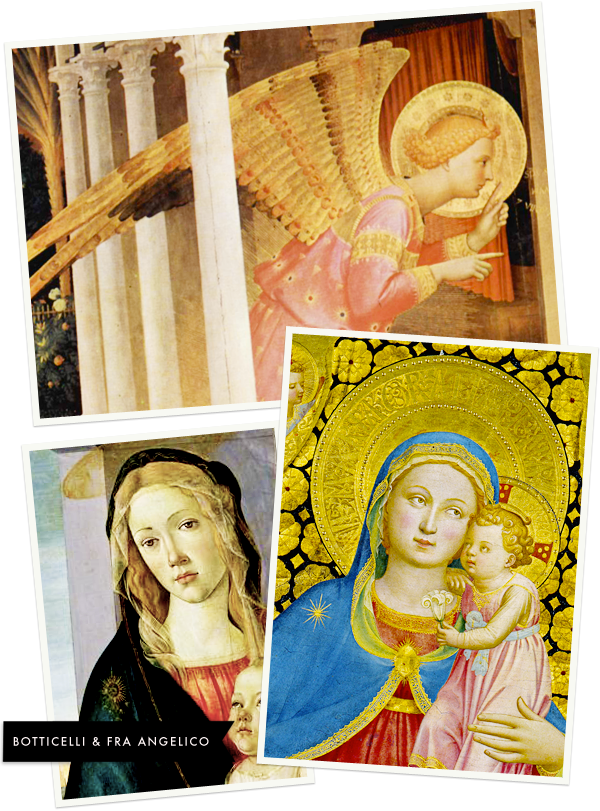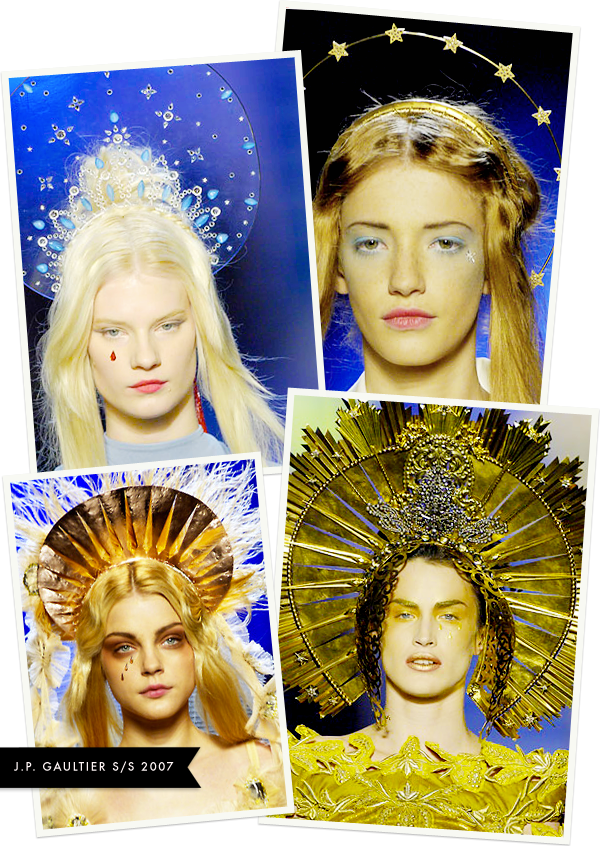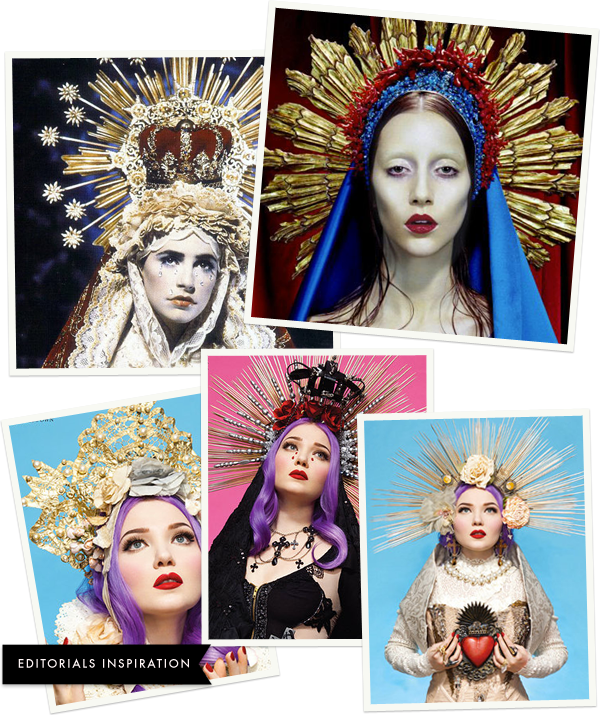Halos seem to be a new trend among lolitas. I don't exactly know what was the origin of this trend. But religious themes have been used a lot in fashion editorials for quite a long time.
I decided to "research" the subject and I thought it might be interesting to share the knowledge I gathered about halos, aureolas and glories.
 Aureola / Halo
Aureola / Halo
Comes from the Latin adjective aureus which means "golden". It's usually a golden disk or circle which surrounds the head (or sometimes the whole body) of a religious figure. At first it was a pagan symbol used by the Egyptians, Greeks and Romans to symbolize divinity or spiritual power, which was later assimilated into Christian art.
I decided to "research" the subject and I thought it might be interesting to share the knowledge I gathered about halos, aureolas and glories.
Comes from the Latin adjective aureus which means "golden". It's usually a golden disk or circle which surrounds the head (or sometimes the whole body) of a religious figure. At first it was a pagan symbol used by the Egyptians, Greeks and Romans to symbolize divinity or spiritual power, which was later assimilated into Christian art.

Some examples of halos used in Christian art.
You might notice that Botticelli (on the left) introduced perspective: the halo is now hovering over the heads of the saints.
Comes from the Latin adjective gloria which means "fame". It takes the shape of rays of light surrounding the head of a saint. It's a Christian symbol it denotes the manifestation of God's presence. Glory and halos are often confused.

Very famous use of "Glory" and "Halos" in Fashion.
Jean Paul Gaultier's S/S 2007 collection.

Other examples of glories and halos used in fashion editorials.
Pierre et Giles - Miles Aldridge - Jason Setiawan
If you're interested in purchasing a "halo" or a "glory", I found some on Apatico which are not that expensive, and Pearls and swine makes some pretty cool Virgin Mary inspired headdresses but they're more expensive and probably less easier to wear than the Apatico ones.
So what do you think of the use of these religous symbols in fashion (lolita or not)? Do you think it's outrageous or would you wear halos, or maybe do you already have one?
Aucun commentaire:
Enregistrer un commentaire
1. Comments are moderated.
2. Please don't post spam/advertisements, or your comment won't be published.
3. At last, thanks for your comment!